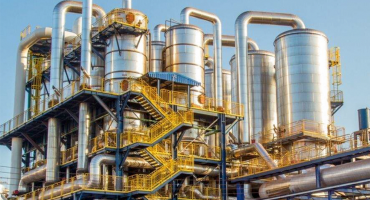
Steam boilers are an integral asset in the process and manufacturing industries. Boiler tube failures are one of the major concerns of the process plant managers as they can cause severe steam boiler issues if overlooked. In such situations, it is advisable to contact an expert boiler manufacturer to seek guidance and immediate action to prevent boiler tube failure. Usually, a boiler tube failure causes other boiler problems. Therefore, it is important to perform a careful examination to understand the cause of the boiler tube failure, neglecting which may lead to the steam boiler failure and related expenses for the same.
Since it is vital to prevent severe damage in the process plant and the operating personnel, here are the listed causes and solutions of boiler tube failures in fireside of the steam boiler:
- Fuel Ash Corrosion:
Fuel ash corrosion results from the ash characteristics of the fuel and the design of the steam boiler. It occurs usually in coal-fired boilers but also takes place in oil-fired boilers. The ash is considered in the steam boiler design while determining the size and materials to be used in the steam boiler. Additionally, the combustion gas and temperature of the metal in the convection passes are essential considerations. Harmful consequences take place with coal ash constituents remaining in a molten state on the superheater tube surfaces, leading it to be highly corrosive.
It is characterized by loss in external tube walls and increasing boiler tube strain, with an appearance usually seen during the removal of scale and corrosion products. It affects the superheater in a steam boiler. Ash corrosion can be reduced significantly by using materials with higher chromium concentrations. Installing stainless steel boiler tube shields reduces fuel ash corrosion in steam boiler components with very corrosive conditions. Introducing calcium and magnesium to the fuel can also help lower fuel ash corrosion.
- Fireside Corrosion Fatigue:
Fireside corrosion fatigue is caused by corrosion and thermal fatigue. Boiler tube surfaces face thermal fatigue stress cycles that take place due to soot blowing, slag, or cyclic operation of the steam boiler. Additionally, thermal cycling can cause cracking of the less lubricated external boiler tube scales, exposing the base to repeated corrosion.
Boiler tubes develop multiple cracks on the outer surface and spread into the tube wall. It is usually found on furnace wall tubes of coal-fired boilers but also takes place on tubes in drum-type boilers. The solution to prevent fireside corrosion fatigue is to lower the ramp rates during start-up and shut down for reducing the thermal stress. Additionally, optimizing soot-blowing operations can minimize thermal stresses.
- Waterwall Fireside Corrosion:
Waterwall fireside corrosion is found on external surfaces of water wall tubes as the combustion process produces a reduced atmosphere. Coal-fired boilers with maladjusted burners or staged firing are more likely susceptible to localized regions with a reducing atmosphere, resulting in increased corrosion rates. It is indicated by external tube metal loss leading to thinning and increasing boiler tube strain and usually affects water wall tubes.
The ideal method to prevent water wall fireside corrosion is by using a weld of high nickel overlaid on boiler tubes with the worst corrosion. Corrosion-resistant thermal sprays are also an ideal solution for this issue.
- Erosion:
Erosion of boiler tube surfaces occurs from impingement on the external surfaces. Firing fuels with high ash leads to increasing erosion, slagging, and fouling issues in a steam boiler. The erosion occurs along with thermal fatigue in cases of soot blower steam. It is indicated by the boiler tube experiencing metal loss. Ultimately, failure is caused by the rupture due to increasing strain as boiler tube material erodes.
Erosion is commonly found near soot blowers on the economizers, superheaters. It can be prevented by distributing flow evenly in the steam boiler and considering a lower ash fuel.
- Fatigue Failure:
Fatigue failure is the result of cyclical stress in the steam boiler. Contrary to thermal fatigue, damage of fatigue failure is caused by external stress through vibration by flue gas flow, soot blowers, or boiler cycling.
It is characterized by the failures localized to the area of high stress and impact tube penetrations, welds, or supports. Fatigue failure is prevented by detecting and minimizing the source of stress.
General Failure of Boiler Tubes:
- Short-Term Overheat:
Short-term overheat failures occur during boiler start-up and fail with the increasing temperature of tube metal due to lack of cooling steam or water flow and impacts furnace wall tubes and superheaters. It is prevented by avoiding blockages within boiler tubes and bends and following standard procedures for shut-down and start-up.
- Long-Term Overheat:
Long-term overheat takes place over months or years as superheater tubes fail after many years of service due to creep. Furnace water wall tubes also fail due to long-term overheating. It is prevented by cleaning tubes with chemicals for better heat transfer and by balancing the furnace/flue gas temperatures with circulation to reduce the tube temperatures.
Conclusion:
Rakhoh Boilers has been a leading boiler manufacturer since its inception in 1983 with world-class manufactured steam boilers, waste heat recovery boilers, thermic fluid heaters, and boiler accessories. We deliver the best boiler services like annual boiler maintenance, boiler automation, energy audit, steam trap assessment, fuel conversion, etc.
For more details on our products and services, visit www.rakhoh.com










